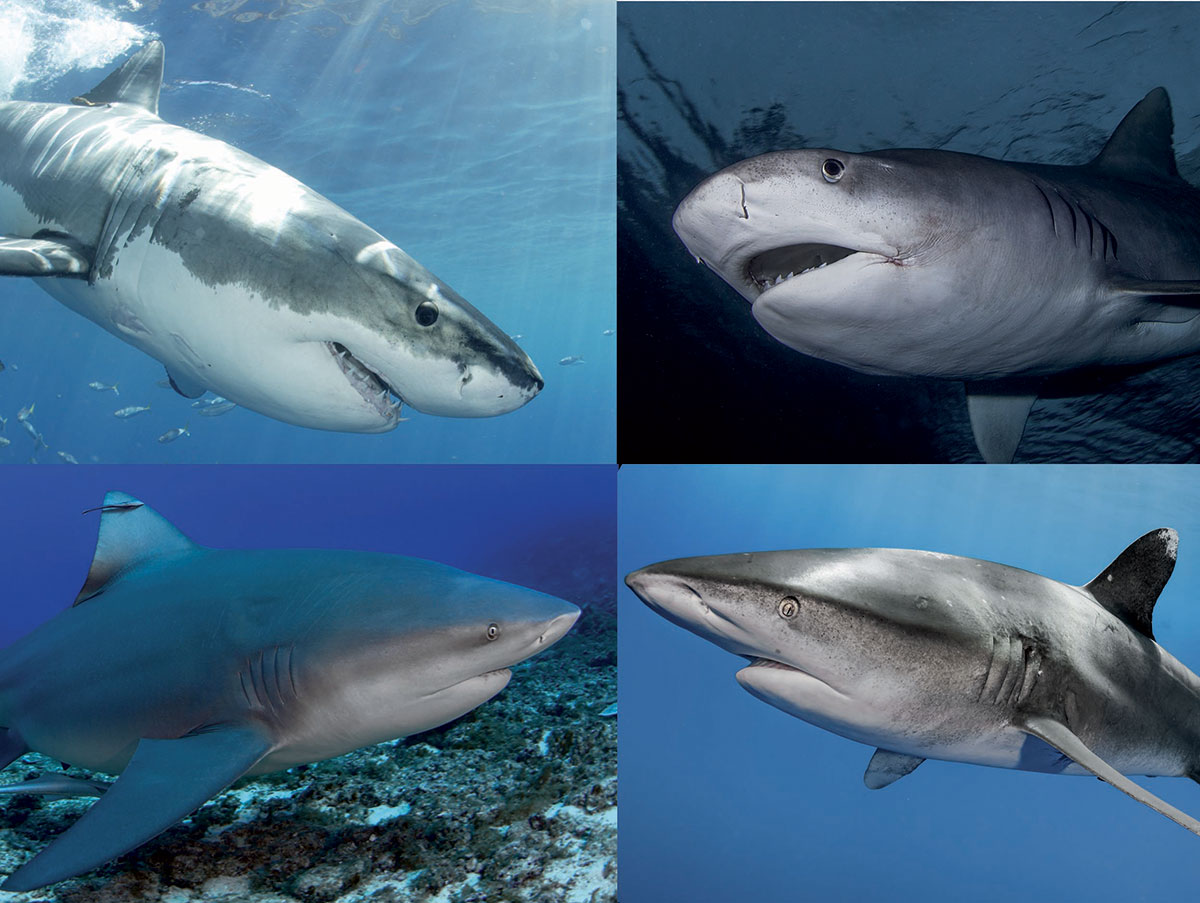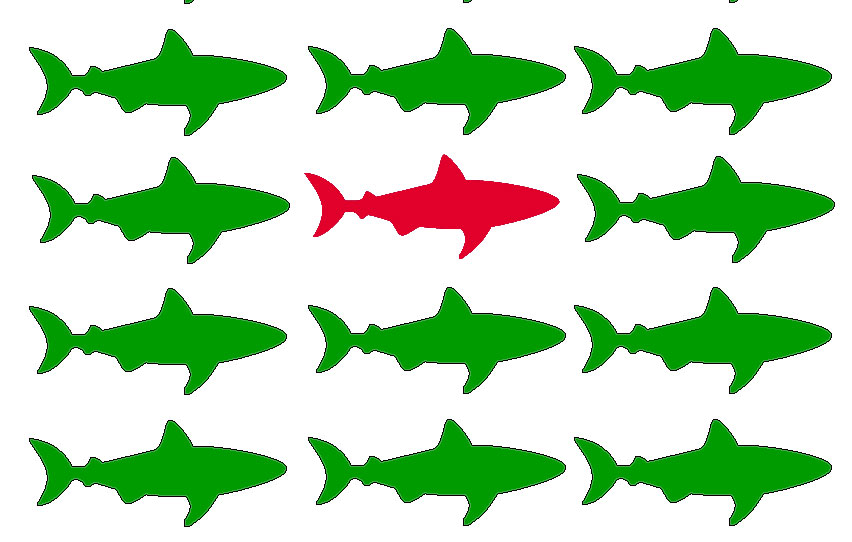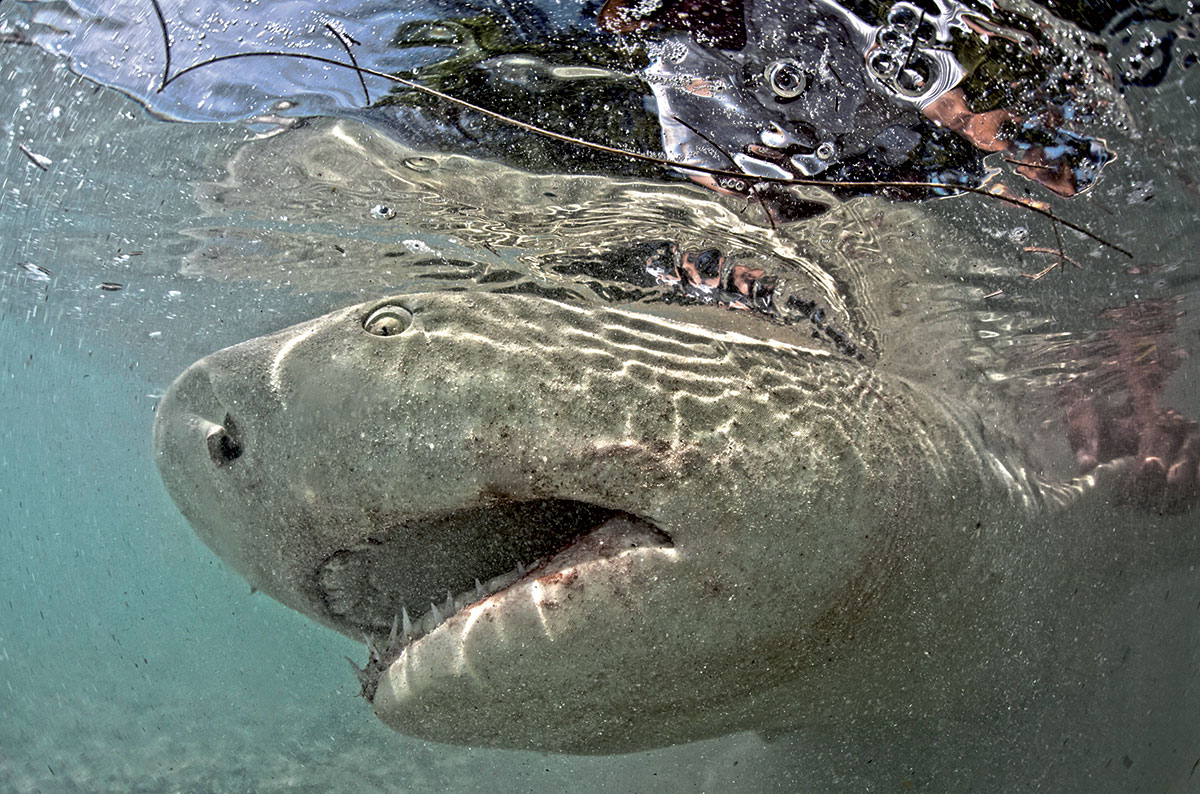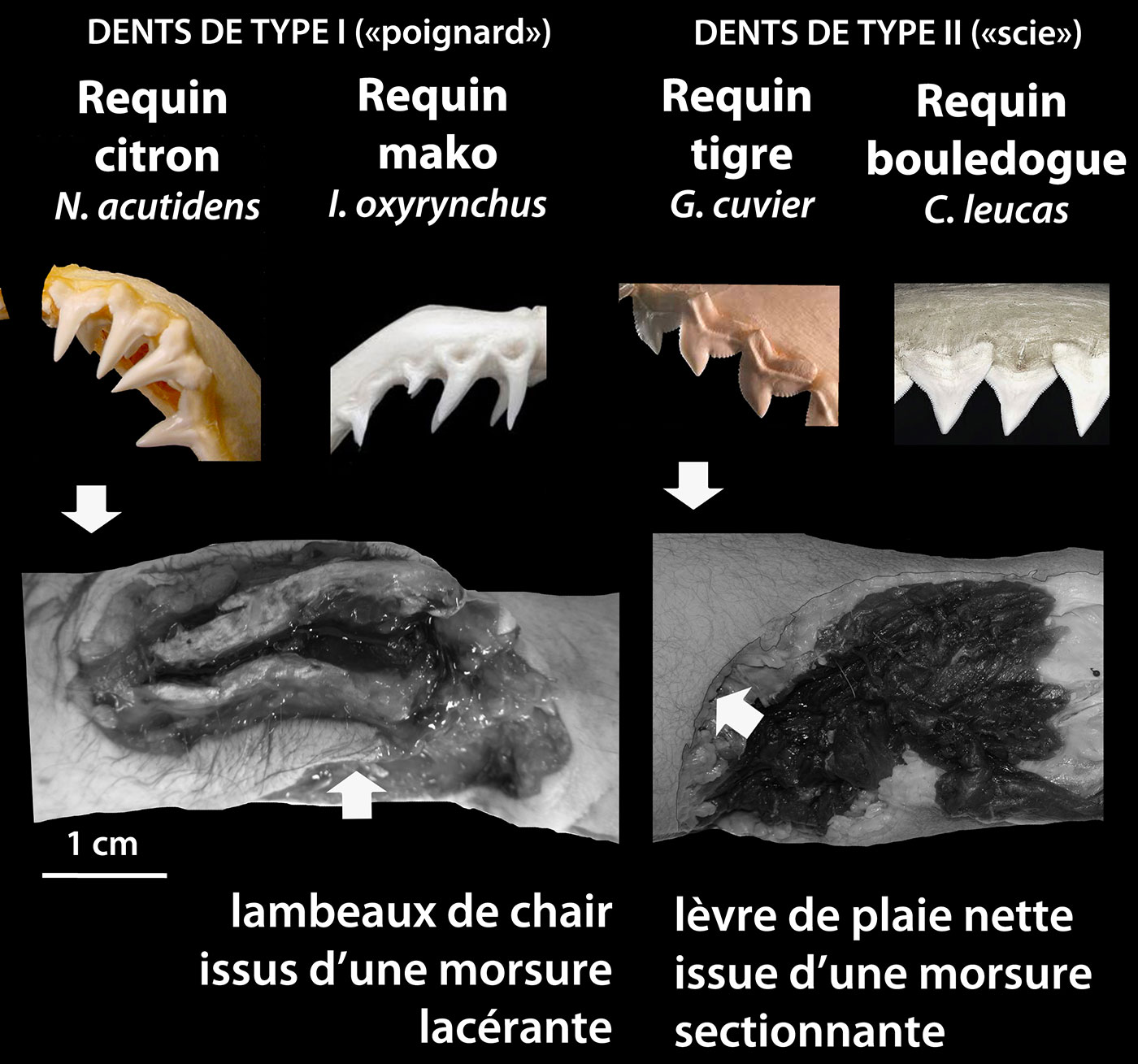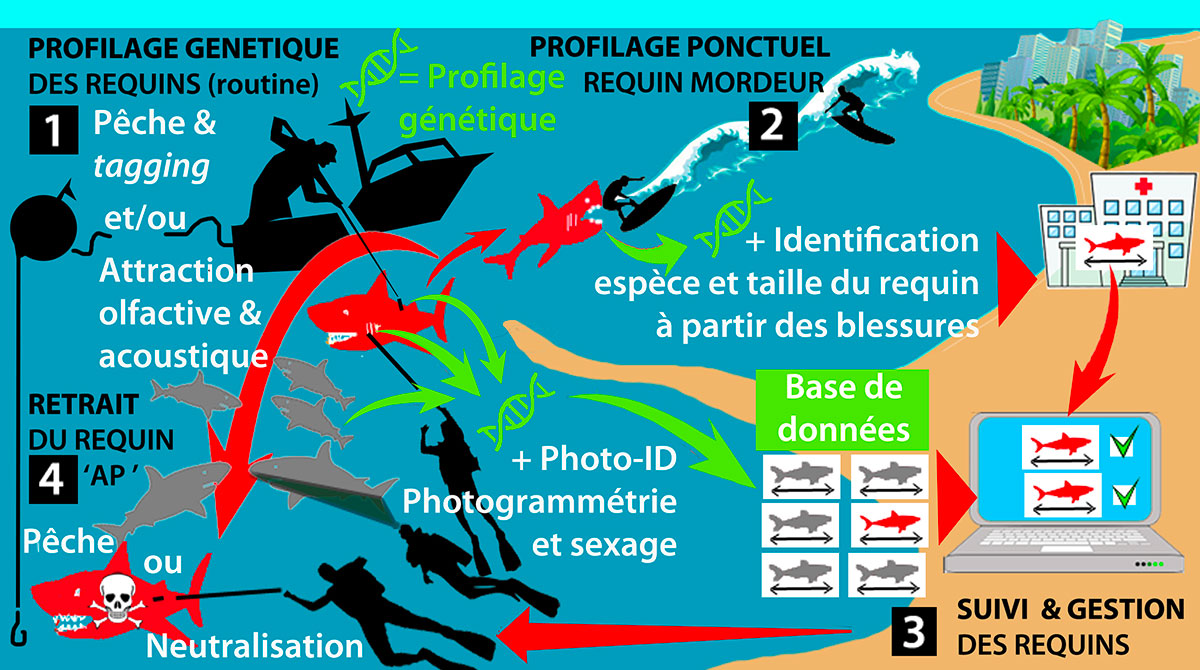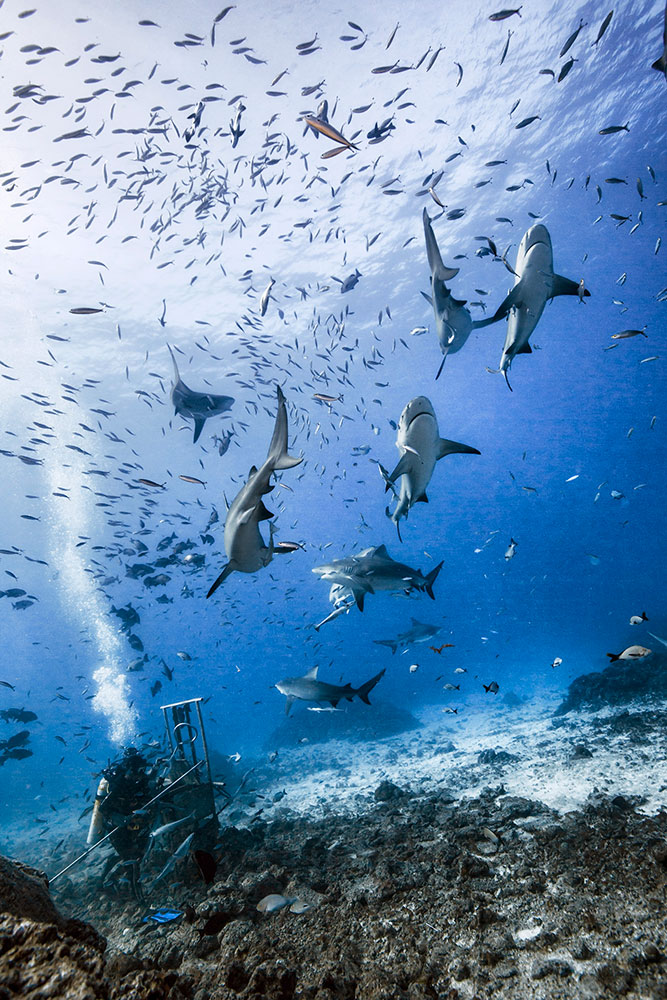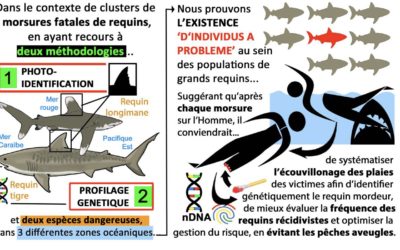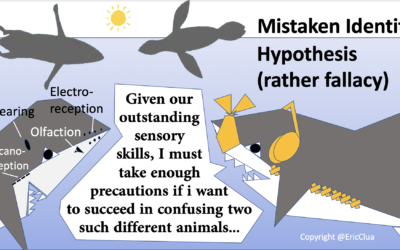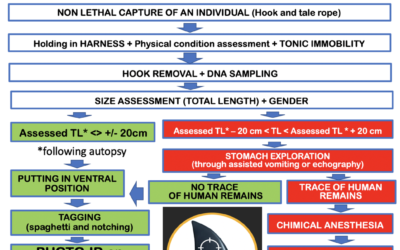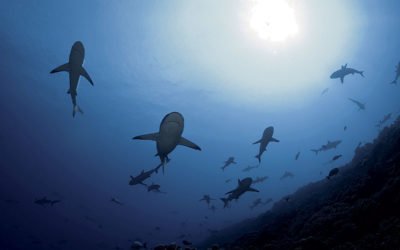ABOUT
PROF. ERIC CLUA
After starting my career as a veterinarian, I specialised in marine ecology, environmental economics and eco-anthropology. Since 2005, I have been focusing on the role of sharks in tropical ecosystems and on their interactions with humans. I am particularly interested in the behaviour of large sharks (white, tiger, bulldog and oceanic whitetip) and in understanding shark bites on sea users. In collaboration with several international experts, I have written numerous scientific articles and a book on the subject, and I advocate for shark conservation through the print and television media, as well as through public lectures. I am first and foremost a man of the field, who has built his career on contact with nature. Trained by my father at the age of 5 in scuba diving and underwater spearfishing, I am a national freediving instructor and professional scientific diver. I have put all my technical and naturalistic knowledge accumulated in the waters of all the world’s oceans at the service of a rational approach, guided by science and facts. I present here the fruit of 10 years of reflection and studies aimed at managing the shark risk in a reasoned, intelligent and most respectful way possible for the sea and its natural occupants.
WHY DO SHARKS BITE HUMANS?
On average, there are about 100 shark bites on humans every year worldwide. Of these bites, <10% are fatal to the victims and involve mainly four species of large sharks: the white shark, tiger shark, bull shark and oceanic whitetip shark. Although rare, these bites maintain an irrational fear of these animals, which are in fact much less dangerous than others (dogs, for example). The vast majority of these fatal bites are motivated by predation, with a shark seeking to feed on humans, even though the latter are not the shark’s natural prey. When a large shark bites to feed on a human, it is not a mistake (see Blog 1), as we tend to believe, but a shark that is dysfunctional (compared to its fellow sharks) and is referred to as a problem shark. This is called a predatory bite.
This type of bite is often fatal because the animal tears off a lot of tissue (to feed) and the blood loss is massive. In this approach, the animal -who does not know who it is dealing with and remains very cautious despite its boldness- will sometimes go through an exploratory phase, biting -often superficially- a human
This is called an investigative or exploratory bite, with a bite-and-spit. The animal can then either continue the predation, postpone a new predation, or abandon this type of prey which is not suitable. Investigative bites, which are usually superficial, are not fatal, as are all other bites in which the loss of material is small and the consequences rarely fatal for humans. This represents >90% of bites which, unfortunately, people indiscriminately mix up with predatory bites. They also involve the four species mentioned above, but many other species that will never feed on humans, such as grey reef sharks, lemon sharks, blacktip sharks, etc. Unlike predatory bites, where humans are unfortunate enough to be targeted, all these bites are usually the responsibility of humans. This is the case when humans covet the shark’s natural prey, for example when spearfishing. The shark seeks to feed on the hunter’s wounded fish and may bite the hunter, not to feed on it but to discourage a competitor. This is called a competition bite. This is also the case when humans attack sharks and the shark legitimately defends itself by biting its attacker (for example, a spearfisher who shoots at it with a speargun).
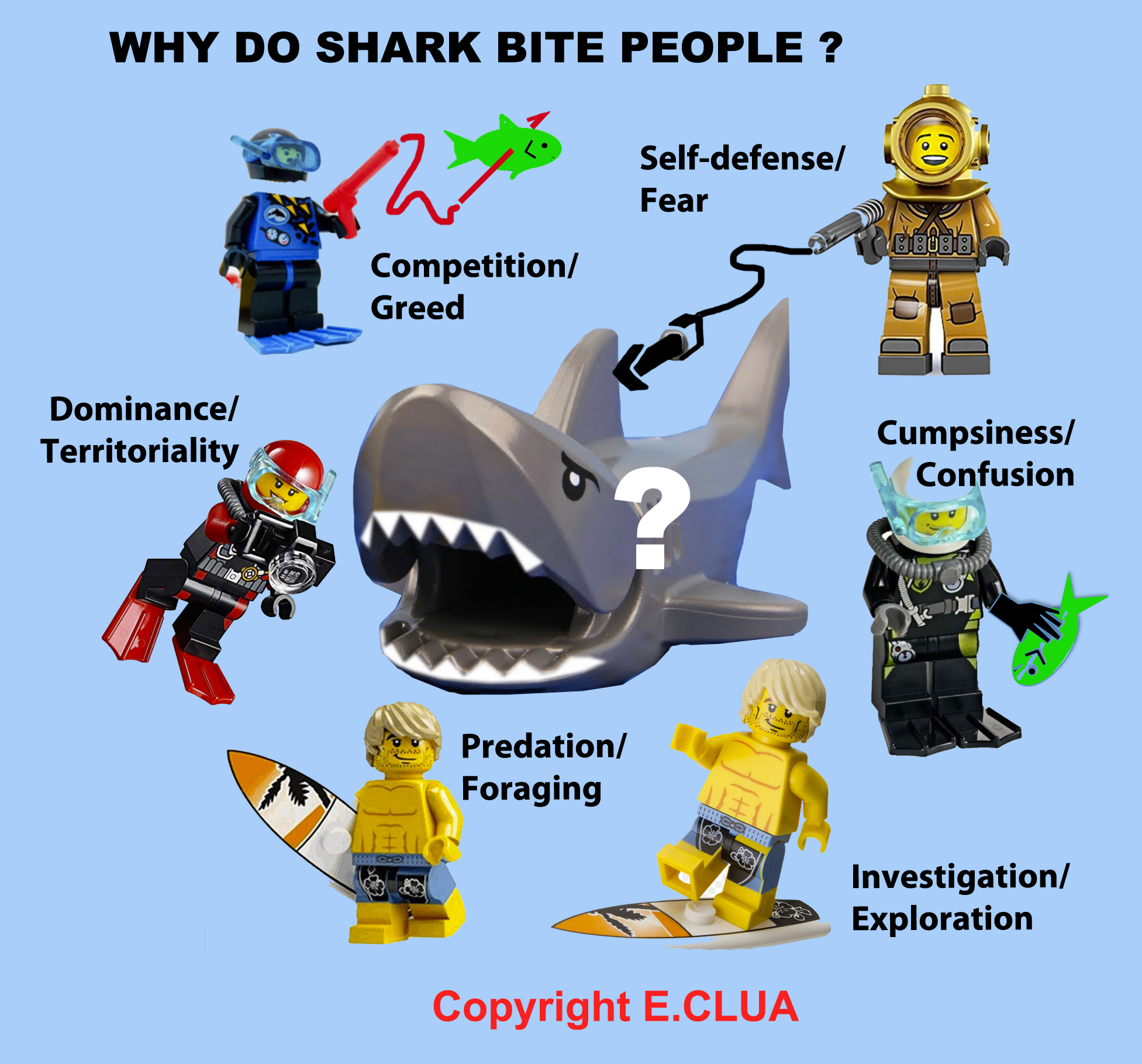
This is called a defensive bite. This is the case when one gets too closely involved in natural or artificial feeding situations, during which the shark will bite the human, not to feed on it, but out of clumsiness (a kind of collateral damage). This is common with shark feeding (artificial provisioning), where sharks are trained to bite bait that the diver holds in his hand and the shark ends up biting the hand. This is called a clumsy bite. This is the case when you come face to face with a shark underwater that will feel endangered by your presence, especially if you are too close to it, or if you unintentionally block its path. It is important to understand that some sharks have a 3D bubble around them (safety perimeter) and that if you penetrate it, even involuntarily, they will bite. Some are even territorial. This is called a dominance or territorial bite. It is common for a bite to be a combination of all these motivations, to varying degrees. Finally, sharks are endowed with senses, including an ability to detect electro-magnetic fields emanating from living tissue (muscles). This is why they sometimes bite, not humans directly, but cameras, flashbulbs or outboard motors (from which these fields also emanate). This is called instinctive or reflex biting. Humans are not really affected by this last type of bite.
“What is a “problem shark”?
Humans are not the shark’s instinctive prey, and the shark is generally very cautious in its propensity to test new and unknown prey (hence the extremely low number of attacks despite the millions of daily interactions between sharks and humans around the world). For a shark to dare to attack a human being in order to feed on it, a convergence of factors is required, which rarely happens. It probably requires an animal with a very bold, risk-taking personality. We talk about a bold “personality”, inherited from its father and mother (see Jacoby et al 2014) . They are not very numerous in a given population. The same shark must also be hungry enough (to take risks) and encounter conditions that are favourable to a predation attempt (for example, murky water that will facilitate the surprise effect to minimise energy expenditure, although this is not necessary). All this makes the final probability very low. The predatory bite can be complete (and even repeated) or partial and aborted (see exploratory bite). A shark that has successfully attempted a predatory bite on a human will not necessarily do so again, but the probability that it will do so is significantly higher than that of its conspecifics. Given this high probability of recurrence, it is referred to as a problem shark (see Clua & Linnell 2018). The terminology of ‘problem’ refers to our anthropocentric perception of living beings that do not wish to be considered as prey. From the shark’s point of view, however, there is no desire to harm humans, which it simply sees as a food opportunity like any other. This is a far cry from the inappropriate image conveyed by films such as “Jaws”, which advocate the existence of “rogue” sharks that specifically attack humans, and incidentally take pleasure in doing so. These are purely anthropomorphic manifestations. We could speak of “deviant” sharks, but here again the term has a negative connotation, whereas in absolute terms it is only a neutral deviation from the norm: humans are not prey to sharks. The selective elimination of problem sharks is probably the best compromise in terms of ethics, eco-responsibility and efficiency between the two extremes of inaction and indiscriminate culling. The concept of a “problem shark” refers mainly to predatory bites and rarely to all other bites, which are usually harmless to humans. To identify a problem shark, profiling must be used.
What is shark profiling?
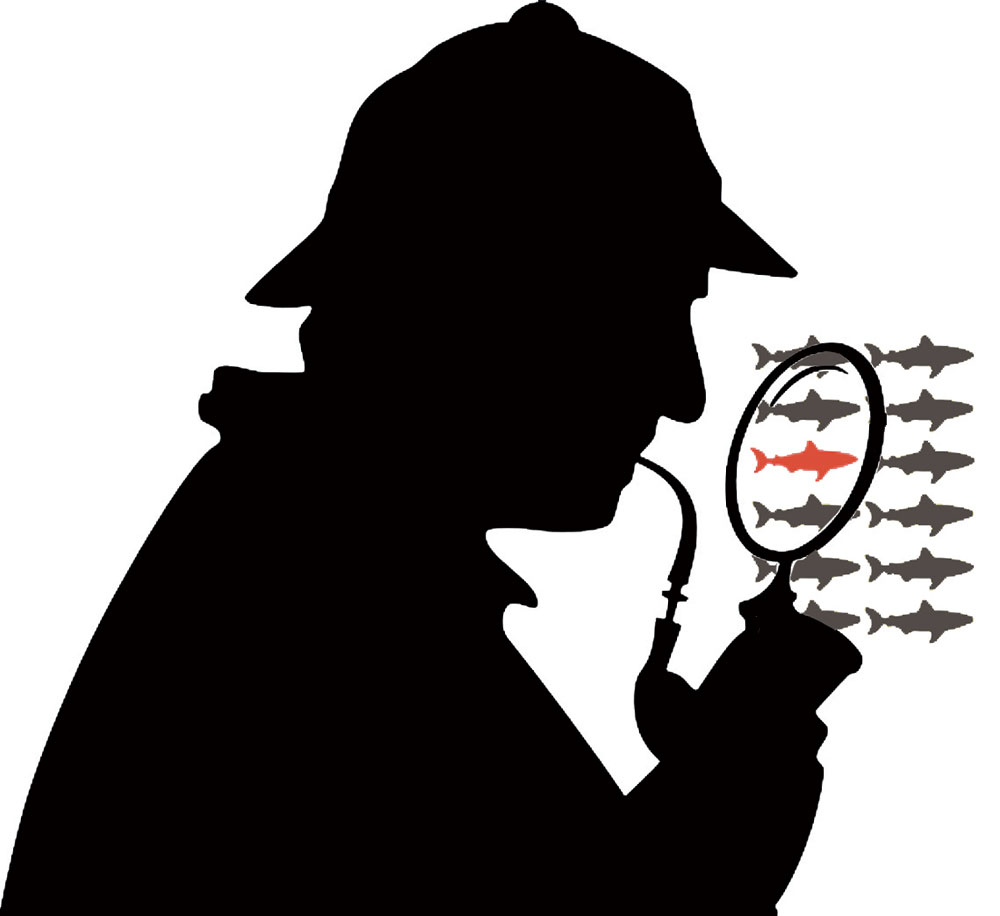
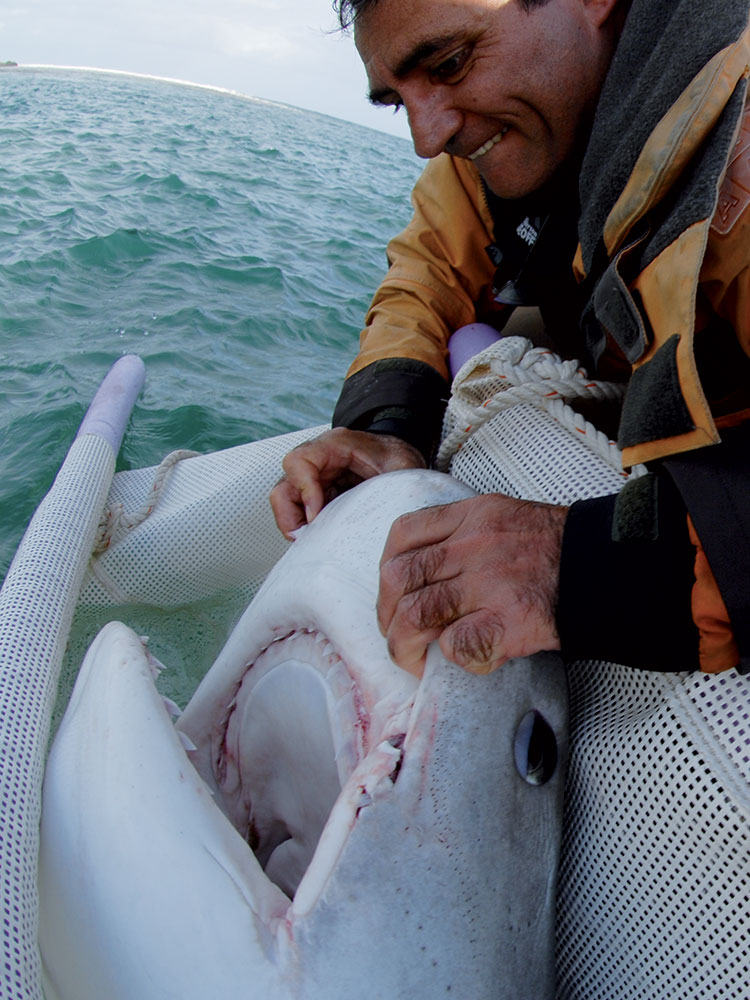
In crime science, profiling consists of characterising, and if possible identifying individually, the person responsible for a murder. This approach can be applied to sharks, essentially in the context of fatal bites on humans. Indeed, the police will not waste time profiling an individual who has broken into a car, they will concentrate on serious cases involving one or more crimes. In the same way, it is unjustified to profile a shark that has superficially bitten a sea user, for no other purpose than to feed on it. On the other hand, profiling a biting shark can allow for its identification and highly selective removal, particularly as an alternative to current practices (such as in Reunion and New Caledonia) of indiscriminately and randomly fishing for sharks to reduce the risk of human bites. Contrary to what the advocates of this approach claim, there is no real effectiveness of preventive fisheries (see Wetherbee et al 1994) , unless the shark or sharks that have bitten are caught by pure chance. In order to profile a shark biter, it is necessary to use traditional forensic tools (during autopsies of victims) that make it possible to identify the species and size of shark responsible for the bite (see Clua & Reid 2018). However, technological advances now allow for the use of molecular biology (DNA analysis). Thus, based on samples taken from the wounds of bite victims, it is now possible to identify not only the species of shark responsible for the attack, but also the individual genetic profile of the individual within that species. This is known as individual genetic profiling of sharks (French acronym: PROGENIR).
More information :
Clua, E., & Reid, D. (2018) Contribution of Forensic Analysis to Shark Profiling Following Fatal Attacks on Humans. Post Mortem Examination and Autopsy-Current Issues – From Death to Laboratory Analysis. (Ed. Kamil Hakan Dogan), Chapter 5, pp. 57-75. InTech Open Science.
Wetherbee, B., Lowe, C., Crow, G., (1994). A review of shark control in Hawaii with recommendations for future research. Pacific Science, 48, 95–115.
Forensic medicine (autopsies)
Forensic medicine aims to define the cause of death of an individual based on the observation and analysis of injuries. In the case of a fatal shark bite, death usually occurs as a result of cardiogenic shock due to massive blood loss. The bite leaves traces of tissue sectioning, which are characteristic of its nature (complete or partial), of the size of the animal, but also and above all of the species involved. Indeed, both the shape of the jaw (its degree of curvature for example), the shape (pointed or triangular for example) and the arrangement (aligned or staggered for example) of the teeth differ significantly between species. In general, the size of the bite gives an idea of the species potentially involved, taking into account the species potentially present on site. Then, the traces left by the teeth can be used to confirm or identify the shark species. Finally, researchers have shown that the distance between the tips of the teeth increases in correlation with the size of the animal (see Lowry et al 2009) ; this is known as the inter-dental distance (IDD). By measuring this distance on the victim by means of suitable tooth traces, an average IDD can be obtained. There are then algorithms (mathematical formulae) that automatically obtain an evaluation of the size of the shark that bit the victim, depending on the species. These algorithms are calculated from measurements made on the jaws of sharks whose actual size is known. This principle also works for the jaw circumference (CM), which can also be modelled and used to estimate the size of the attacker (see Jublier & Clua 2018). Based on this information about the species and size of the shark, a targeted search for the biting shark can be launched via non-lethal fishing campaigns. Once the shark is caught and if it fits the profile (species/size), the stomach contents can be examined with a hand-held ultrasound scanner to detect the potential presence of human remains (particularly bones). The shark can also be made to vomit if necessary. If there are human remains, and only if there are remains, the shark can be considered for disposal, otherwise it can be released. This is also an alternative to preventive culling that systematically kill the animals before autopsying their corpses.
More information :
Lowry, D., de Castro, A.L.F., Mara, K., Whitenack, L.B., et al., (2009). Determining shark size from forensic analysis of bite damage. Marine Biology, 156, 2483e92.
The individual genetic profiling of sharks
PROGENIR (see diagram below) is based on a global strategy to identify and neutralise problem individuals that have bitten a human. As detailed in my 2020 scientific paper (see Clua et al 2020), this risk management strategy would follow two parallel axes based firstly on the organisation of experimental sites annexed to areas of high human frequentation in order to aggregate (via feeding and olfactory stimuli) the sharks frequenting the area and to implement, on a routine basis, individual photo-identification of the animals, body measurements and DNA sampling (via biopsies). These sites, which are kept active throughout the year, would allow the progressive and most exhaustive compilation of a database on as many sedentary or transient (passing) sharks as possible that frequent the area, in order to know their individual DNA profile (nuclear DNA fingerprinting) and to be able to visually re-identify them if necessary. It should be noted that this approach does not exclude non-lethal fishing in order to carry out the same operations, or even tagging, in particular acoustic tagging, to identify sharks from underwater receivers. A second approach (2) would be to implement measures to take samples as early as possible from the wounds of victims, dead or not, in order to collect DNA from the biting shark (this is known as bite-printing via swabbing of the wound lips).
In the absence of or in addition to these early samples, it would also be necessary to develop improved forensic medicine that would systematically include the collection of DNA from the biting shark in its protocols (as is done following a rape, for example). This DNA would make it possible to identify an individual within a given species (nuclear DNA fingerprinting) and thus isolate the genetic profile of the attacking shark (see Clua et al 2021). Cross-referencing the information concerning this genetic profile from forensic medicine (bite-printing) with that from the local experimental site (fingerprinting) (or from existing sites on a regional scale in order to better manage migratory species), would then make it possible to identify the attacking shark visually (and/or using electronic markers). It would then be located at an experimental site (visually by photo-identification or with tags) and after verification of its identity, the problem individual could be surgically removed from the ecosystem (4): either fished to be relocated or euthanised, without interfering with the survival of its fellow sharks. This could be done immediately after the bite if the information is available and the shark is located, or several months later at the same site or another experimental site belonging to a network that exchanges information on sharks. We would hunt a biting shark the same way we would hunt a man-eating lion, all of which is only consistent.
More information:
Clua EEG, Meyer CG, Linnell , Baksay S, Haguenauer A, Vignaud T, Vely M and Planes S (2021) Hunting the hunter: using genetic profiling for improved management of shark attacks on humans. Research square. 10.21203/rs.3.rs-549718/v1
Using feeding to attract to sharks
Feeding consists of using natural bait to attract and gather sharks in a confined area for observation. Originally developed as part of eco-tourism dives, feeding has become a tool for studying sharks by allowing privileged and recurrent access to animals that would otherwise be impossible to approach (see Brena et al 2015) . Feeding is often misperceived as increasing the risk of human bites, which is not true. People think that the risk will increase because the shark might mistake the bait (natural food) for humans (which the shark does not prey on). However, the shark is not mistaken as we tend to believe. On the other hand, it can be clumsy, especially when feeding, and unintentionally bite a human, thinking it is dealing with fish (see Clua 2018). They may also show dominance and competition if they see you as a possible obstacle to their access to the bait. These processes have nothing to do with a predatory motivation that would commit the shark to consider humans as prey. It is the equivalent of a hungry dog biting your fingers (unintentionally) if you offer it some kibble in your hand, or if you put your hand near the bowl where it has its kibble (it is not trying to feed on you but to protect its kibble). These bites are caused by clumsiness, dominance or competition. They exist in the context of feeding (and can easily be managed) but the important thing is to understand that feeding does not increase the risk of predatory bites. If this were the case, sites like Fiji or the Bahamas where bull sharks have been fed for decades would have dozens of predation bites on humans, but this is not the case. On the other hand, in places such as La Reunion Island or New Caledonia, where controlled feeding is not practised and where uncontrolled feeding is allowed to develop by massively and recurrently dumping fish waste into the sea, predation bites do occur. The same goes for the tiger shark, which was artificially fed in French Polynesia (until 2017) without the slightest bite on humans, and Hawaii, where this same species is not fed but has been regularly attacking humans for decades. This is why, on the basis of objective data, feeding can be recommended as a shark risk management tool if it will allow, in sanctuary experimental sites:
1) Recurrent access to a maximum number of animals from a given shark population for photo-identification, genetic sampling and incidental studies of individual behaviour;
2) To gain access to an identified problem shark on an ad hoc basis for selective removal;
3) Potentially serve as a food outlet for sharks (which prefer to feed on bait rather than bite unfamiliar prey), while allowing the use of fish waste as a risk management tool rather than a problem in itself.
More information :
Brena, P. F., Mourier, J., Planes, S., & Clua, E. (2015). Shark and ray provisioning: functional insights into behavioral, ecological and physiological responses across multiple scales. Marine Ecology Progress Series, 538, 273-283.
News / Blog
Problem sharks’ do exist, and it’s time to adapt shark risk management…
Les ‘requins à problème’ existent bien et il est temps d’adapter la gestion du risque requin… Il est communément accepté que les populations de grands prédateurs animaux terrestres (tels que les ours ou tigres par exemple) comptent en leur sein des « individus à...
Deconstruction of the “Mistaken Identity Hypothesis” in sharks
I had already suggested in this same blog in 2021 that the unproven hypothesis that sharks could be "mistaken" when they bite a human by mistaking its silhouette for a natural prey such as a seal or a turtle is inadmissible. Today, my position has been scientifically...
POST-BITE PROTOCOL: STOP THE UNNECESSARY KILLING!
In the protocol for immediate response to a fatal shark bite such as the one that just occurred in Nouméa, I recommend: 1) immediate profiling of the shark in emergency forensic medicine (confirmation of the species and size of the biting shark), 2) NON-LEthal fishing...
Mistaken identity
he shark attacks the surfer because he confuses his silhouette with that of a sea lion or a turtle ": why is it (probably) FALSE and DANGEROUS to think that? FALSE: this hypothesis was promoted by two American scientists, Tricas and McCosker, in 1984. It has toured...




